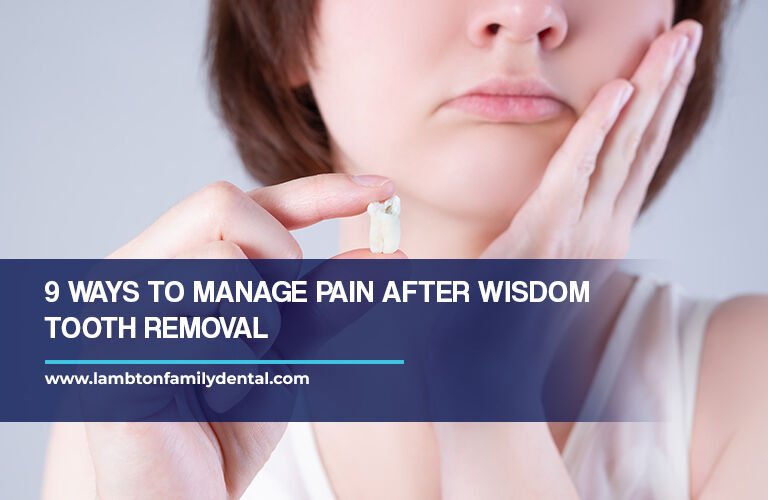Introduction
Learn effective strategies for managing pain after wisdom tooth extraction, including home remedies, medication options, and professional care for a faster recovery.
Wisdom tooth extraction is a common oral surgery, often necessary when third molars become impacted, crowd other teeth, or cause recurring infections. Although the procedure itself is typically quick and safe, the recovery period can involve discomfort, swelling, and sensitivity. Knowing how to manage pain after wisdom tooth extraction not only speeds up healing but also minimizes complications such as dry socket or infection. This guide explains the best practices for relieving pain and promoting a smooth recovery after your procedure.
Why Pain Occurs After Wisdom Tooth Extraction
When a wisdom tooth is removed, your body’s natural inflammatory response kicks in to heal the surgical site. Swelling, tenderness, and bruising are normal during the first few days after surgery. Pain levels vary depending on:
- How many teeth were removed
- Whether the teeth were impacted
- The complexity of the surgery
- Your overall health and healing rate
By understanding the cause of the discomfort, you can take the right steps to reduce it.
Immediate Post-Extraction Care
Proper care during the first 24–48 hours is critical. Following your dentist’s instructions closely will help stop wisdom teeth pain:
- Bite on the gauze: After surgery, your dentist places gauze on the extraction site to control bleeding. Bite down gently but firmly for at least 30–45 minutes to help form a clot and reduce discomfort.
- Apply ice packs: Place a cold compress on your cheek for 15–20 minutes at a time to reduce swelling and numb the area. This is most effective during the first 24 hours.
- Rest: Avoid strenuous activity and keep your head elevated to promote clot formation and decrease throbbing pain.
Pain Medication and Prescriptions
Most patients are prescribed painkillers or advised to take over-the-counter medications such as ibuprofen or acetaminophen. These drugs reduce inflammation and control pain effectively.
- Ibuprofen (Advil or Motrin): Particularly helpful in reducing swelling and pain.
- Acetaminophen (Tylenol): Effective for pain but does not reduce inflammation; can be used in combination with ibuprofen under your dentist’s guidance.
- Prescription medications: In some cases, stronger painkillers may be prescribed, but always follow the dosage instructions carefully to avoid side effects.
It’s essential to take pain medications before the numbness wears off after surgery to stay ahead of the discomfort.
Home Remedies for Comfort
Beyond medication, there are several home remedies to ease soreness and accelerate healing:
- Saltwater rinses: After the first 24 hours, rinse your mouth gently with warm saltwater (½ teaspoon of salt in 8 ounces of water) to keep the surgical site clean and reduce bacteria.
- Cold foods: Eat soft, cold foods like yogurt, applesauce, or smoothies to soothe the area.
- Herbal options: Chamomile tea bags (cooled) can be placed on the affected area for a mild anti-inflammatory effect.
- Hydration: Drink plenty of water to stay hydrated, but avoid using straws, which can dislodge the clot and lead to dry socket.
Foods to Eat and Avoid
Your diet during recovery plays a significant role in managing pain after wisdom tooth extraction. Stick to soft, nutrient-rich foods for the first few days:
- Good options: Mashed potatoes, scrambled eggs, oatmeal, smoothies, and soup.
- Foods to avoid: Crunchy snacks, spicy foods, alcohol, and hot beverages, which may irritate the wound or delay healing.
Eating soft foods reduces chewing effort, which in turn minimizes pressure and pain at the extraction site.
Preventing Dry Socket and Infection
Dry socket is one of the most painful complications after wisdom tooth extraction. It occurs when the blood clot at the surgical site dislodges or dissolves prematurely, exposing the underlying bone. To prevent it:
- Don’t smoke or use straws for at least 72 hours.
- Avoid spitting forcefully or vigorous rinsing during the first 24 hours.
- Stick to the pain management and cleaning regimen your dentist prescribes.
Signs of infection such as severe pain that worsens after a few days, bad breath, or fever—require immediate professional attention.
Long-Term Recovery Tips
After the first week, your discomfort should begin to subside significantly. Continue with good oral hygiene to prevent infection:
- Gently brush your teeth but avoid the extraction site until it’s healed.
- Continue saltwater rinses to keep the area clean.
- Transition back to your regular diet gradually, as tolerated.
Most patients recover fully within 7–10 days, although healing may take longer for complex extractions.
When to Call Your Dentist
While mild pain and swelling are normal, certain symptoms indicate complications that need prompt evaluation:
- Severe pain that does not improve with medication
- Persistent bleeding after 24 hours
- Swelling that worsens instead of improving
- Fever or chills
- Difficulty swallowing or breathing
If you experience any of these, contact your oral surgeon or dentist immediately for further care.
Professional Help for Post-Extraction Pain
If your pain persists or worsens, professional dental care is crucial. A qualified dentist can evaluate the surgical site, rule out infection, and provide additional pain relief or antibiotics if necessary. For expert dental care, visit thewdentalgroup.com to learn more about managing oral surgery recovery and ensuring a healthy, pain-free smile.
Final Thoughts
Managing pain after wisdom tooth extraction is about combining the right medication, home care, and dietary choices to encourage healing. By following your dentist’s instructions, maintaining good oral hygiene, and monitoring your symptoms, you can significantly reduce discomfort and recover more quickly. With proper care, most patients are back to their normal routine within a week.
Whether it’s your first wisdom tooth removal or a repeat experience, knowing what to expect and how to handle post-extraction pain empowers you to heal faster and more












